Menu
You can manage your membership and billing method by clicking here
Terms of Service
Privacy Policy
Copyright © 2025 Office of Immigration Australia, a private company registered in Australia. All Rights Reserved.

Checking membership status...
 EXCLUSIVE MEMBERS ONLY ACCESS
EXCLUSIVE MEMBERS ONLY ACCESSTo access this month’s edition & Member’s only resources, enter your registered email address.



Exclusive Australian Immigration News, Updates & Opportunities
December 2023
This bulletin is for members only, and provides our members with month to month updates on Australian immigration policy changes and consequential opportunities. Opportunities are found via federal and state government policy shifts for the demand and supply for certain occupations.
This bulletin will keep you up to date so that you do not have to employ expensive immigration lawyers to provide you with monthly research.
December 2023 has landed, and Australia’s migrant intake has ‘already hit a record 500,000 people’, and is on track to have a additional 20,000 people by years end!
Recent recruiter surveys have shown that job vacancies are going unfilled at record levels and 79 per cent of employers in Australia report difficulty filling vacancies. This national crisis has triggered the Australian Government to focus their migration plan on permanent settlers and targeting top foreign-born talent for the long haul!
In this month’s ‘Federal News‘, a leaked government discussion paper reveals advanced details of Home Affairs Minister Clare O’Neil’s migration system shake-up that will provide pathways to permanent residency for up to 2.1 million temporary visa-holders.
Also, in this month’s federal news, we discuss current processing timelines for Australian Citizenship applications!
In this month’s ‘State News’, skilled workers residing offshore remain eligible to be considered for ALL State and Territory nominations! Please view the State Migration Section of this month’s bulletin for all State and Territory program updates and opportunities available!
In this month’s ‘Economic News’, employers have warned of a skilled foreign worker exodus from the regions to the cities under sweeping new visa rights being considered by the Albanese government.
And in other economic news, we take a closer look at the city of Sydney, as it has just been named the best place to live in the world!
In this month’s ‘Student News’, overseas students now play a vital role in contributing to the record surge in population across Australia, and we discuss 10 university degrees that can lead to financial success!
All this and much more in the December issue of The Australian Immigration Bulletin! Let’s take a deeper look at what has happened so far and what is planned for the remainder of December 2023 in Australian Immigration so that you can start planning!
All members now have FREE access to an online IELTS English Platform and course to practice, study and improve their English and IELTS score. The IELTS exam is one of the key recommended exams you will need to take in order to Apply for Skilled Migration to Australia and the better your results, the higher points you will get when submitting an expression of interest. The advanced English and IELTS platform will allow all members to practice Mock IELTS Exams, learn cutting edge tips and gain a greater understanding of how to achieve a Band 9+.
All members also have access to “ImmiConnect” which is now available in the member’s area. ImmiConnect is the Office of Immigration Australia’s Employer Sponsored program which allows overseas workers to receive job interview invitations from Australian employers, when job opportunities come available.
The program aims to bring globally mobile, highly-skilled and specialised individuals to Australia who can fill critical areas of need.
ImmiConnect is exclusive to active Australian Immigration Bulletin Members only. You must be a current Australian Immigration Bulletin Member to be eligible to receive job interview invitations.
So if you are interested in receiving these invitations, please sign up for FREE by Clicking “ImmiConnect” and adding your name and email address.

*2 WINNERS DRAWN EVERY MONTH:
Current round: October 2023 – February 2024 (10 winners/prizes in total)
There is always a winner, and the next one could be you!
The winners of the December 2023 Immigration Prize Giveaway were drawn at 10am AEST on 1st December 2023.
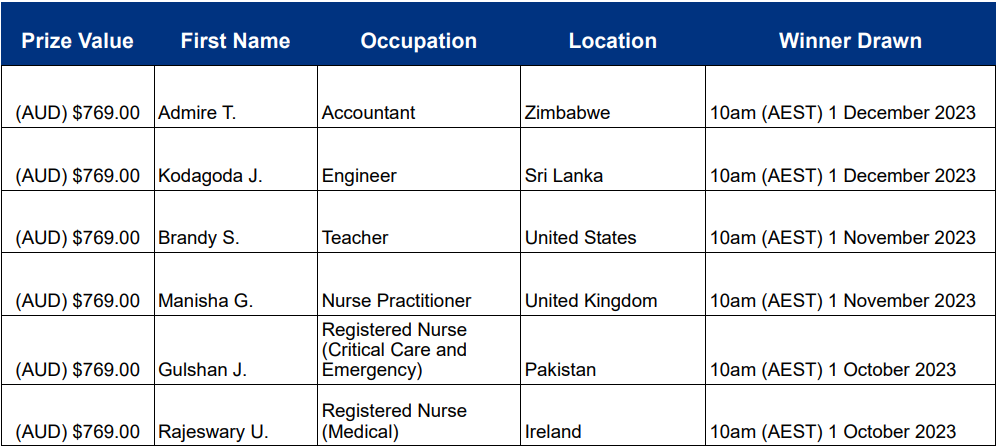
Congratulations to the December 2023 winners! You have been sent a confirmation email with details on how to claim your prize!
The next 2 lucky winners will be drawn at 10am AEST on 1st January 2024.
As of 6th July 2022, people entering Australia do NOT need to provide evidence of Covid-19 vaccination status. Additionally, people leaving Australia will NOT be asked to provide evidence of their vaccination status. Unvaccinated visa holders do NOT need a travel exemption to travel to Australia. It is however important to remember that airlines, vessel operators and other countries may have specific requirements that travellers need to comply with.
Please see the list of vaccines that are recognised by the Australian government for travel purposes here.
This Bulletin and its contents is for general information purposes only and should not be used as a substitute for consultation with professional advisors.
As legislation and travel requirements are constantly changing, we strongly recommend obtaining advice on your individual situation from a Registered Migration Agent.
Please click here to book a consultation with one of our Registered Australian Migration Agents, located in Australia.

Surfers Paradise, Queensland
The Results of the August 2021 census were made public on 12th July 2022, and revealed that Australia has become a majority migrant nation, as the census data shows for the first time that more than 50 per cent of residents were born overseas or have an immigrant parent. Last year’s census counted nearly 25.5 million people, including 1 million new residents.
Australia’s 2023-24 Migration Program has been carefully designed to boost the social and economic outcomes that meet Australia’s needs. In fact, the migration programme was first launched in 1945 following the aftermath of World War 2. Given this long history, it is worth understanding how it works. The Australian Immigration Bulletin exists to help explain this in more detail.
As we’ve entered the 12th month of the year, join us for a look at the latest news and developments in the world of Australian Immigration!
We asked those who have established themselves with skilled jobs to share their experience and tips for a career in Australia.

We spoke with a skilled migrant, a civil engineer currently working for a private consultancy.
Tell us about your job now.
I have worked for this consulting firm for nearly 4 years. I did not originally intend to work for a private firm.
I had been working for a state department for 7 years. However, the company, which I am working for at the moment, asked me if I’d like to work for them. It was a hard decision but in the end, I decided to leave the public sector.
How did you get your job before that?
I found the job through the government website. I was also looking for work through other websites:
I was also asking some of my friends who were already working in the engineering field if there were any job opportunities which may not have been advertised yet.
I applied and went for an interview.
What things do you wish you knew or did differently?
I came from Vietnam which is a non-English speaking country. For a long time, I didn’t really focus on improving my English. I wish my English could be better so that I would have communicated with the people who interviewed me in a better way.
How did you get your very first professional job in Australia?
My very first job was also with an engineering consultancy. I got this job through a friend of mine who is also a civil engineer. He had referred me to the company manager who then offered me a casual position.
This was not the position I was looking for. I was looking for a permanent position. However, I knew that this opportunity could allow me to demonstrate my ability to work in a foreign country and adapt to its culture.
What did you learn from your very first job?
I succeeded in demonstrating that [ability to work in a foreign country and adapt to its culture]. This very first job was a stepping stone to the job with the state department.
My first job allowed me to expand my relationship network and provided me working experience in Australia. These definitely helped me in finding my second job.
And the more experience you accumulate through time, the more opportunities you find.
What obstacles did you face?
Firstly, English was my big problem. At a lesser extent, working culture was another issue.
How did you overcome those obstacles?
With the language, I have no choice but keep improving it day by day. Learning English everywhere, every time. I worked to improve all the aspects of the language including reading, writing, listening and speaking.
To overcome working culture, I have tried to learn about Australian culture and the people. At the same time, I also keep improving myself to be more adaptive and flexible.
Furthermore, I have focused on developing soft skills such as interpersonal skills, communications skills, teamwork skills, time management skills, etc.
I know that employers look for candidates with soft skills as they are such important skills that could contribute to the success of a business.
What have you learnt about job seeking?
For non-English migrants, English might be an obstacle in finding a job, depending on what industry you are in.
Expanding your relationship network would improve your chance of finding jobs.
What advice can you share with migrant jobseekers in Australia?
If you are finding it difficult to find a job, you might want to find some work experience through volunteer opportunities.
They might not relate to your main skills, but they will help you to improve other skills that includes soft skills.
Improve your English if you come from non-English speaking country.
Learn how to write a CV properly. Seek advice from who has succeeded in finding a job.
Expand your relationship network. Try to connect with people who come from the same country and successfully found a job here.
Do not just look for opportunities from one source. Try different sources.
You might even bring your CV to the company you like to work for, knock on their door and ask for opportunities.
Be positive and keep improving your skills. Adapt to the new culture. To do this, humility is required.
Be patient and keep looking for opportunities.
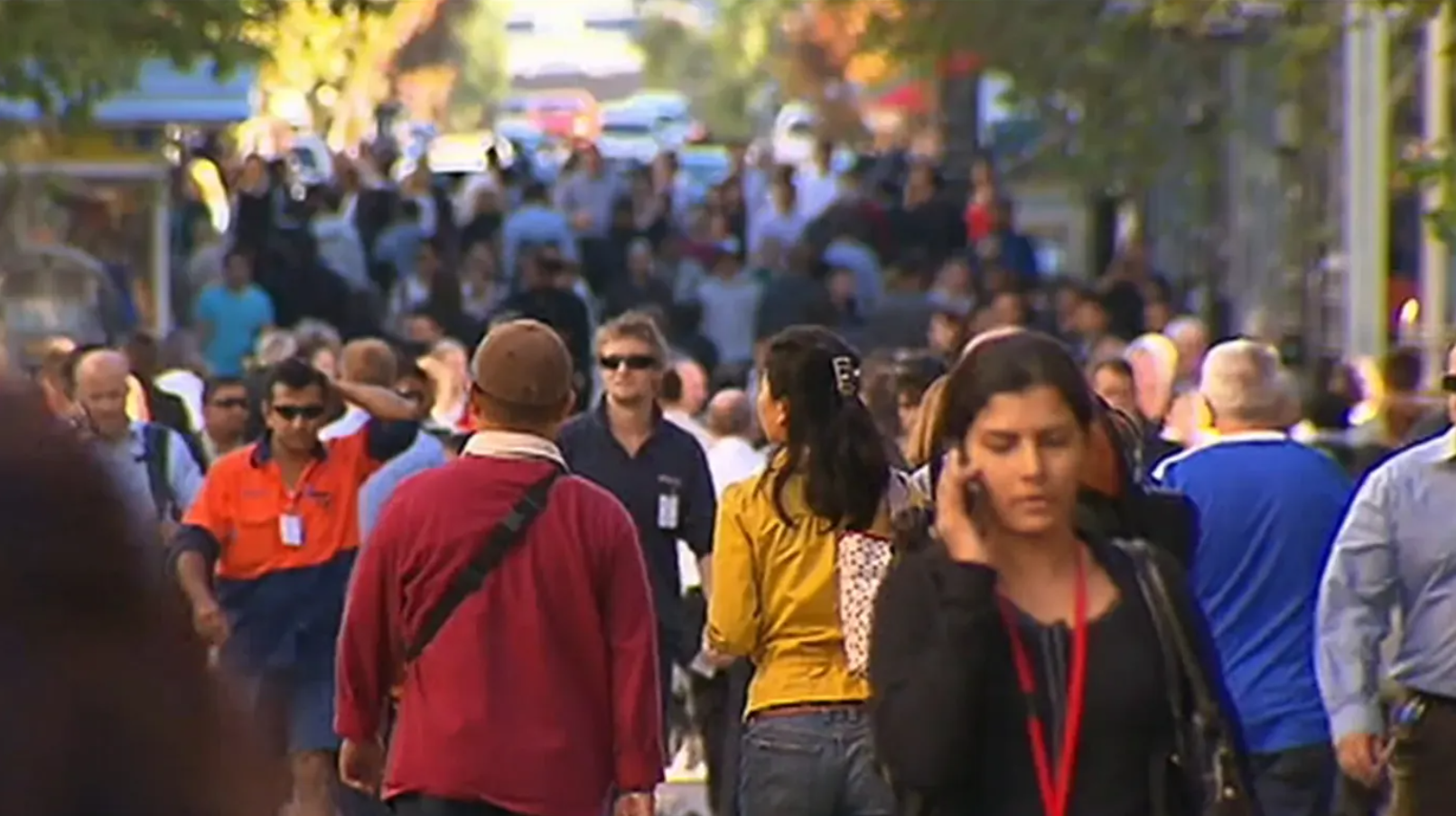
Australia is on track to have a record additional 520,000 people arrive this year.
More than 390,000 people arrived in Australia in the year to September and if this trend continues, more than 520,000 additional people will arrive in 2023.
The Australian Bureau of Statistics arrival and departure data published today found net permanent and long-term arrivals in September was the highest on record for September at 38,520 people.
Australia’s population is growing faster than at any time in the last 70 years.
In the wake of the COVID-19 pandemic there have been severe shortages of workers around the world. Recent recruiter surveys have shown that job vacancies are going unfilled at record levels and 79 per cent of employers in Australia report difficulty filling vacancies. The ongoing competition for talent is very real.
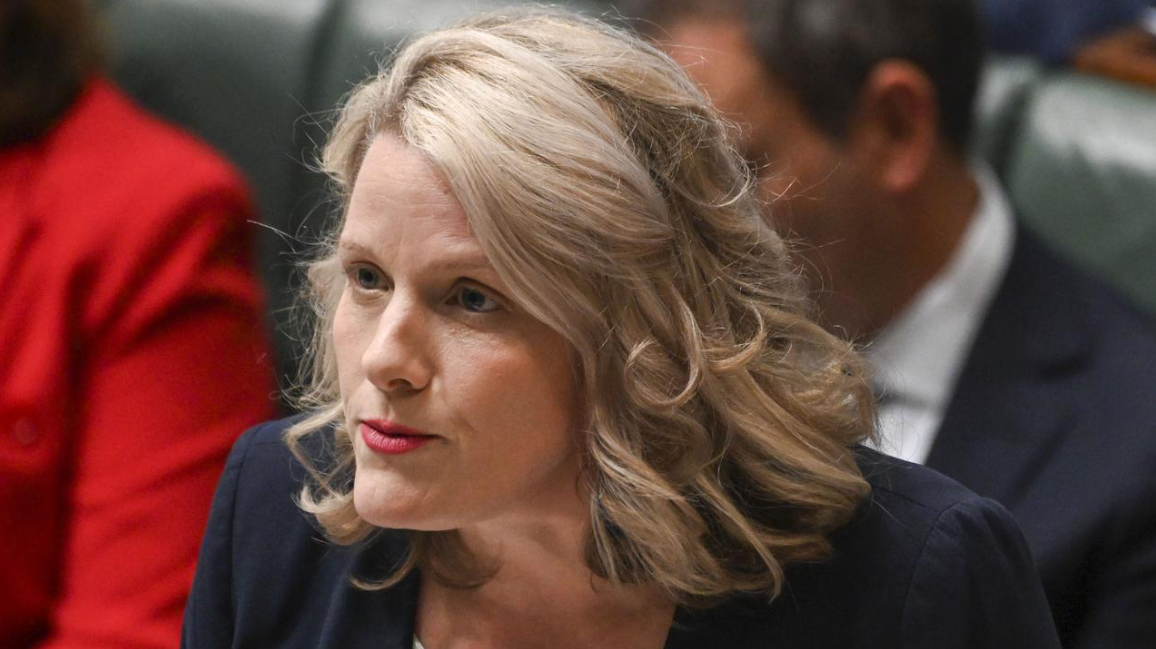
The Albanese government will target top foreign-born talent for the long haul in its upcoming migration strategy, as a new OECD study shows skilled migrants boost the productivity of local workers.
Home Affairs Minister Clare O’Neil’s response to the expert panel’s migration review delivered in March, due within weeks, is also expected to tighten entry for temporary migrants who have surged into the country after borders were reopened to foreigners in November 2021.
There are 331,000 more international students and foreign workers here than the pre-pandemic high of September 2019, leading to world-leading population growth.
New figures from the Department of Home Affairs show that in the two years to the end of last month, the number of temporary visa holders in Australia with work rights – including students, graduates, working holiday-makers, skilled and unskilled workers, and New Zealand citizens – has risen 692,500.
At the start of this month, there were almost 2.3 million people on temporary visas with work rights, or about one in six of the nation’s entire labour force of 14.6 million.
In the past financial year, the stock of people on temporary visas (not including visitors and aircrew) rose 424,000.
As the expert panel found, while Australia mainly relies on the annual permanent migration cap to manage migrant numbers, it “is a poor tool for driving predictability of overall migration flows”.
Canberra’s former top bureaucrat Martin Parkinson, who led the migration review, said government needed to consider the optimal size and composition of migrant intakes, temporary and permanent, over the medium to long term in the best interests of Australia.
In its survey, published on Friday, the OECD said “immigration will continue to play a key role in the labour market”.
“However, the composition of the skilled migrant intake needs to be more responsive to changes in the skill needs of industry, including through better use of timely and granular data, analysis and the views of employers,” it said, in line with the Parkinson review.”
Home Affairs recruited extra staff and improved systems to cope with the post-pandemic surge in demand for temporary and permanent visas and to clear a processing backlog.
In its report on the migration program, the department said “healthy pipelines and strong lodgement rates also supported delivery of the 2022-23 permanent migration program across streams, with increased demand for skilled migration in particular”.
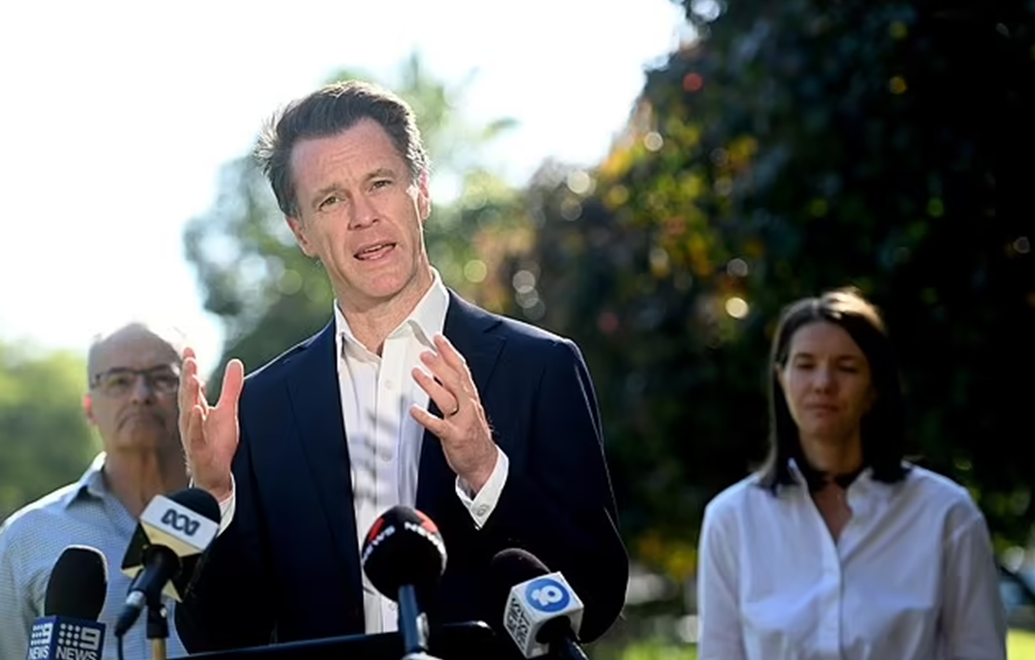
NSW Premier Chris Minns has revealed he is in favour of high immigration into Sydney.
Mr Minns said he supported record immigration levels, as more migrants were needed to build Sydney’s infrastructure including more houses and apartments.
‘We’re supportive of the commonwealth government’s decision to lift immigration into New South Wales, notwithstanding the fact that we’ll take, not the majority but the greatest number of inbound immigrants,’ he said.
‘A lot of that labour coming into the state will be directed to the housing market and we need them to help build houses and apartments.’
Mr Minns, who owns a house with his wife Anna, also advocated relaxing planning laws, with help from local councils, so more apartment towers could be built in established suburbs, rather than clearing land to build new houses in far outer suburbs.
‘It means more urban in-fill, it means more apartments and units,’ he said.
‘My job is to create the infrastructure and get rid of the red tape that’s blocking that kind of housing supply for the state.’
Mr Minns argued more apartments would improve affordability.
‘If we can get that rolling, and at least come first on the east coast, we can ease some of the housing challenges, particularly young people face in New South Wales,’ he said.
‘We believe that we have got enough capacity for large scale infill development, so high-rise apartments particularly closer to the CBD.’
Australia’s population growth pace of 2.2 per cent is among the highest in the developed world.
The NSW state Budget included a $2.2billion Housing and Infrastructure Plan.
This will include $1.5billion to build roads, parks, hospitals and schools to support the construction of new homes across Sydney, the lower Hunter, Central Coast and the Illawarra.
‘We’re always going to take help from the commonwealth government, particularly when it comes to houses,’ Mr Minns said.
Sydney and Melbourne housed 56 per cent of new migrants between 2000 and 2021, Australian Bureau of Statistics data showed.
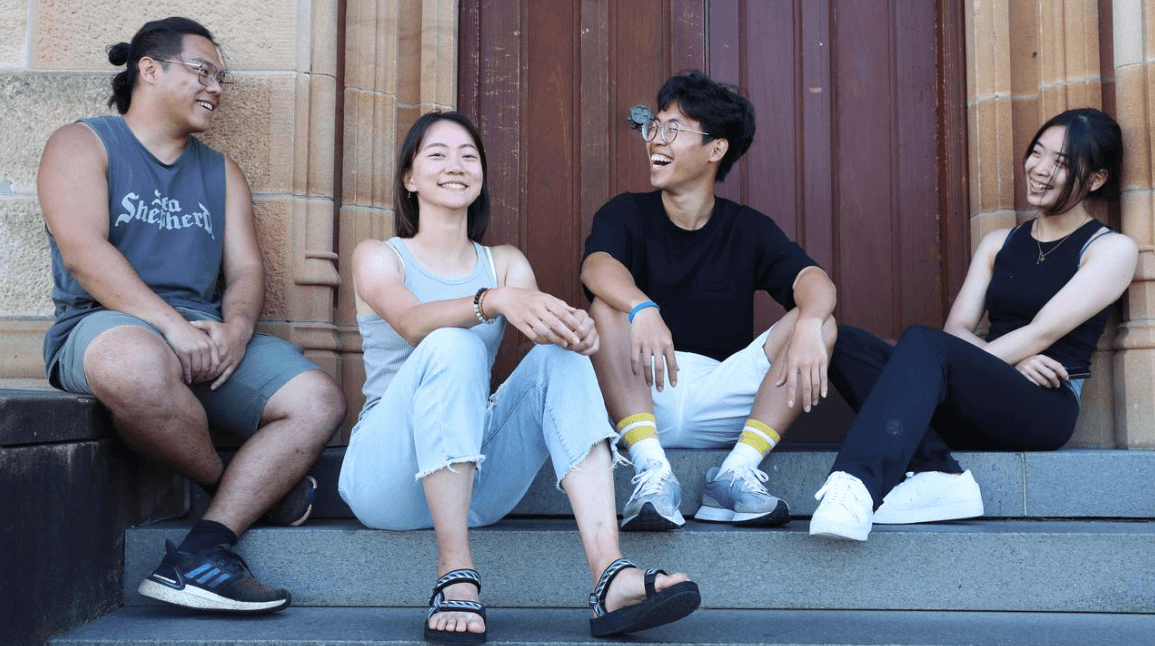
Australia’s multicultural identity has been a defining feature throughout its history. The nation’s culture, economy, and consumer behaviour have all been significantly shaped by its diverse population. Australia has been a land of immigrants since European settlement, with a consistent influx of new arrivals, resulting in continuous national population growth.
The first comprehensive census conducted in 1891 indicated that approximately 32 per cent of the population was born overseas, reflecting the substantial immigration waves in the preceding years.
This demographic diversity has enriched Australia’s cultural fabric but this percentage dropped to as low as 10 per cent in 1947, largely due to reduced immigration during periods such as World War I, the Great Depression, and World War II.
In the post-war era, immigration patterns rebounded quickly, leading to a steady rise in the overseas-born population. In 2021, this trend had a temporary setback due to Covid-19 travel restrictions, affecting incoming and outgoing migration flows.
Fewer people born overseas immigrated to Australia, and fewer Australians born in the country departed for living abroad. Nonetheless, this circumstance was short-lived, with the relaxation of travel restrictions leading to a stronger expansion of the overseas-born population.
The Australian Bureau of Statistics (ABS) regularly publishes comprehensive data on the country’s overseas-born population. The most recent, released on October 31, reveals that as of June 30, 2022, Australia’s population was estimated at 26 million. Of this total, 18.3 million were born in Australia, and 7.7 million residents were born overseas.
The proportion of Australia’s overseas-born population increased from 29.3 per cent in 2021 to 29.5 per cent in 2022, with a net growth of 155,000 individuals.
While this figure remains slightly below the pre-Covid level of 29.9 per cent, in 2020 it is expected to match or exceed those levels considering the migration assumptions for 2023.
Australia proudly stands as one of the most culturally diverse populations and continues to have rapid growth and diversification, even in the face of the pandemic. When compared to the top 15 economies worldwide, Australia remains the frontrunner.
Canada, at No.2 on this list, has just 21 per cent of its population born overseas, illustrating a significant 9-percentage point difference. Following Canada, Germany is at 19 per cent, the USA and Spain at 15 per cent, and Britain at 14 per cent.
This data highlights Australia’s unwavering dedication to multiculturalism, showcasing the nation’s embrace of diverse cuisines, lifestyles, shopping habits, and the significance of cultural sensitivity. It positions Australia as a global pioneer in nurturing cultural diversity and inclusiveness, with virtually every country worldwide being represented.
The English-born population remains the largest group among Australia’s overseas-born population, a trend that has persisted since the 1901 Census.
In 1901, about 495,500 individuals were from the United Kingdom, constituting 58 per cent of the total overseas-born population. This number has grown to 961,000 individuals in 2022, making up 12 per cent of the overseas-born population.
The Indian-born population was the second-largest group among Australia’s overseas-born population in 2022, at 754,000 people. Indian-born individuals now represent about 3 per cent of the total Australian population and 10 per cent of the total overseas-born population. This represents significant growth from the 2001 census, when there were just 95,000 Indian-born individuals. The Chinese-born population, while substantial, dropped from its peak; 661,000 in 2019, to 597,000 individuals in 2022. Despite this decrease, it remains a significant part of Australia’s diverse population.
Australia’s foreign-born population typically falls into one of three categories: skilled migrants and their families (often holding permanent or long-term visas), temporary visitors, primarily including students, working holidaymakers, tourists, and temporary skilled workers, and humanitarian visa recipients.
Recent data from the ABS showed there were about 1.6 million temporary visa holders and 25,000 overseas visitors at the time of the 2021 Census.
Likewise, as of August 2021, there were about 3 million permanent migrants in Australia who had arrived in the country since the year 2000.
Among these, 1.7 million (59 per cent) were skilled migrants, 962,000 (32 per cent) were family members of skilled migrants, and 284,000 (9 per cent) held humanitarian visas.
Australia’s migration scheme offers numerous advantages.
Skilled migrants have effectively countered population ageing, enhanced labour productivity, and enabled businesses to access skills that are often in short supply. Moreover, unemployment rates among skilled migrants are notably lower than those in the general population.
To illustrate, the labour force participation rates for skilled migrants reached an impressive 81 per cent in the 2021 census.
There’s substantial evidence indicating that migrants play a vital role in supporting long-term economic growth.
A 2015 Intergenerational Report published by Australian Government estimated that, over the 40-year period up to 2015, population factors contributed almost 18 per cent of the annual average GDP per capita growth of 1.7 per cent.
This was primarily driven by an increase in the working-age population, demonstrating how migration aided the economy in effectively navigating challenges such as the Global Financial Crisis and subsequent global economic downturn.
However, while immigration-driven population growth has brought many benefits, it has also posed several challenges, particularly in Australia’s major cities where growth has been most pronounced.
Issues such as congestion and pollution have long been a concern for policymakers and will remain relevant even in the context of zero population growth. It’s important to note that these challenges have a two-sided nature: while a larger population can create problems, it also provides a larger pool of individuals to address these issues.
The growth of the resident workforce has been declining since 2006 due to lower fertility rates in recent decades and the resulting ageing of the population.
Without migration, workforce growth would have been even lower, acting as a drag on economic growth. Instead, migrants have contributed to employment growth.
Effectively addressing the challenges associated with migration allows us to sustain and enjoy the economic and cultural advantages it brings, setting an exemplary standard for other nations to follow.

The processing timelines for Australian Citizenship will be updated monthly, giving you a general idea of how long it will take to process your application. Most visa subclasses and citizenship products have processing periods available. Still, some of them don’t like those that are closed to new applicants, capped, and queued, or those that have a low volume of applications. The two processing times show how long it takes to process 75% and 90% of the global application submissions.
Changes in application volume, seasonal peaks, complicated situations, and incomplete applications affect processing time. Applications submitted on paper or online are all processed at the same time. You should submit your application online because it simplifies the process.
Australian Citizenship Processing Time 2023
If you’ve sought for conferral of Australian citizenship:
The processing of 90% of applications for citizenship by descent in Australia in less than five months.
90% of applications for Proof of Australian Citizenship in less than 22 days.
Applications for which one of the following occurred during the reporting month are included in the processing times provided for the citizenship by conferral process.
These percentile values mean to serve as a general guide.
The following is an interpretation of percentile reports:
If processing your application is completed within the advertised processing dates, there is no additional information the Department can offer.
Factors That Influence Processing Times
The Department considers each application individually, and actual Australian citizenship processing time may differ because of unique factors like:
Conclusion
Australian citizenship is optional to live permanently in Australia. A permanent resident’s rights are substantially equivalent to those of an Australian citizen. However, there are some situations where citizens are granted rights that permanent residents are not.
Australian citizenship processing time after the test is 12 months, which means After passing the citizenship test, you will be invited to attend an Australian citizenship ceremony within 12 months.

If you are interested in applying for a general skilled migration visa to Australia, it is important to have a good understanding of the skilled visa options and how the migration points test works, so that you can maximise your chances of being eligible to apply for a skilled visa.
A general skilled migration visa is an option available to skilled workers who are seeking to qualify for a skilled visa independently, or under a state or family sponsorship. It is an alternative to an employer sponsored visa.
One of the key criteria to qualify for a general skilled migration visa is the points test (a criterion that does not apply to employer sponsored visas). This is often the most challenging aspect for prospective skilled visa applicants to overcome when seeking an invitation to apply for the relevant skilled visa.
If you are considering applying for a general skilled migration program visa, an important concept to understand is the Expression Of Interest (EOI).
If you are considering applying for a general skilled migration visa, it is important to be aware that for certain visas in this visa class, you will first be required to lodge an EOI with the Department of Home Affairs (the Department) through Skill Select. The EOI is not a visa application, but rather, it is the process by which you can express your interest in applying for the relevant skilled visa (It’s important to note, that there is NO fee to submit an EOI).
This requirement applies to the following skilled visa subclasses:
Let’s take a brief look at each of these visas below:
The ‘subclass 189’ is a federal sponsored visa that grants automatic permanent residence in Australia. It is subject to nil visa conditions or obligations. For this reason, it is often considered to be the most flexible of the skilled visa options available.
A subclass 189 points-based visa allows you to live and work in any state or territory permanently.
The ‘subclass 190’ is a state/ territory sponsored permanent residence visa. It is another points-based visa for which invitations are issued throughout each month by individual states and territories. One of the benefits of applying for state nomination is that you will be granted an additional 5 points.
An important aspect to consider, which does not apply to the subclass 189 visa is that there is an added step in the application process. In this case, you must also apply for nomination approval to a state or territory government. Only upon receipt of an invitation from the relevant state or territory to which you apply can you then apply to the Department for the visa itself.
Your obligations as a subclass 190 visa holder are that you must commit to your nominating jurisdiction’s obligations and commit to residing in your nominating State or Territory for two years from visa grant.
The ‘subclass 491’ is also a points-based state/ territory (or family) sponsored visa. It is a regional visa with a term of five years. The Department issues invitations for family sponsored EOI applications only (in invitation rounds). Invitations for state sponsorship are issued by individual states and territories throughout each month. This will grant you an additional 15 points for the nomination.
Being a provisional visa, this means it provides a pathway to permanent residence in Australia with the Subclass 191 Permanent Residence (Skilled Regional) visa, subject to meeting specified requirements.
Be mindful that as a subclass 491 visa holder, you must abide by visa condition 8579, which requires you to live, work and study in a designated regional area of Australia. For migration purposes, most locations of Australia outside of major cities (Sydney, Melbourne, Brisbane, Perth, etc.) are classed as regional areas.
If your EOI is successful, you will receive an invitation to apply for the visa, as specified in the invitation letter. This then enables you to proceed with lodgment of your visa application (provided you meet all other visa lodgment and visa grant requirements).
Please note, the below State and Territory program updates is a general overview only. It does not take into account any of your personal circumstances. You must check the State/Territory information carefully to ensure you can meet all the requirements for nomination.
Australia is currently facing a shortage of skilled migrants to fill workforce demands. In response, states and territories have been easing the conditions of their visa programs to help attract skilled workers from overseas.
Below is the monthly update for some of the State and Territory opportunities available.
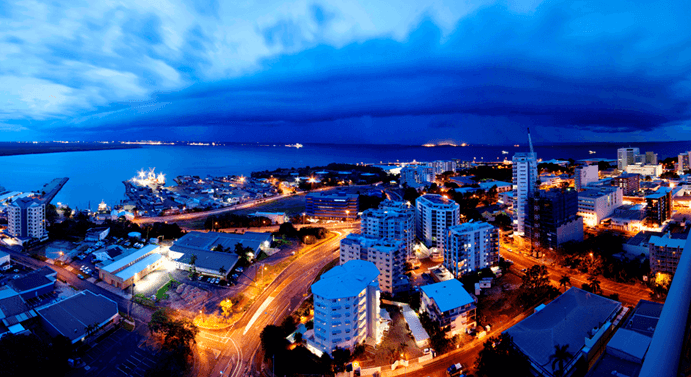
Program Status Update
UPDATE: NT GSM nomination applications for 2023-24 now open for subclass 491
The NT Government have begun accepting new applications for nomination under the Skilled Work Regional (Provisional) subclass 491 visa program.
Applications are assessed under new eligibility criteria as published on the NT website.
A summary of key changes to eligibility criteria are as follows:
Please see the full eligibility criteria.
Onshore applicants should make their applications well ahead of any visa expiry dates. Those who have visas expiring should seek professional advice on their visa options and ensure that they remain lawful during their stay in Australia.
It is the applicants’ responsibility to ensure that they meet visa eligibility criteria, including maintaining valid skills assessments and English test results.
People residing offshore are eligible to be considered for Northern Territory (NT) nomination. Invitations to apply for Northern Territory nomination will be via the ranking system.
The ‘Northern Territory Offshore Migration Occupation List’ identifies the occupations in current demand in the Northern Territory. This List is important if you want to apply for Northern Territory nomination for either a:
The ‘Northern Territory Offshore Migration Occupation List’ is only applicable for those applying for NT nomination from outside Australia, under the Priority Occupation stream.
Please note: The Northern Territory government has advised that offshore applicants will generally only be offered a Northern Territory nomination for a subclass 491 visa. Subclass 190 nominations will only be offered in exceptional circumstances, such as cases where the applicant has strong connections to the NT.
The NT advises eligible applicants to apply as soon as they meet the eligibility criteria. To receive a nomination from the NT Government, you must:
Before submitting an EOI for The Northern Territory, applicants should check that they meet all eligibility requirements.
For a further explanation, see the Frequently Asked Questions page on the Northern Territory Government website.
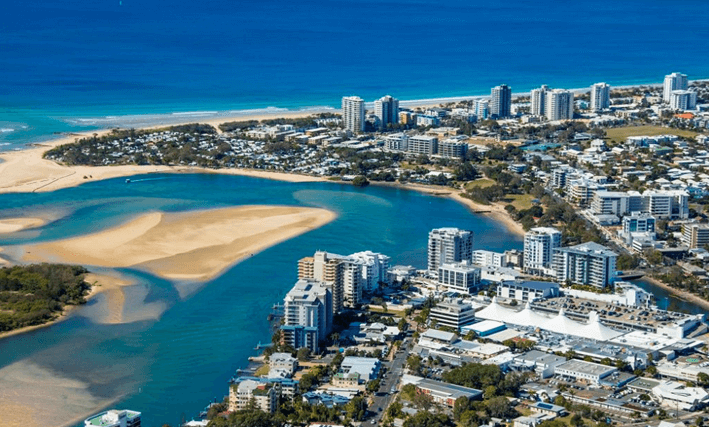
Program Status Update
To manage Queensland’s COVID recovery response, applicants currently residing offshore are now able to apply.
Depending on your occupation and situation, there are two state nomination options available for skilled migrants through Queensland.
For Queensland state nomination, prospective applicants must meet the Department of Home Affairs requirements, state-specific occupation requirements and have skills in an occupation that is available on the Queensland Skilled Occupation List.
You may undertake employment once onshore in Queensland through:
Offshore applicants meeting the minimum published requirements are eligible to lodge an Expression of Interest (EOI).
NOTE: The 2023 – 24 program opened on 5 September 2023. Migration Queensland will only consider EOIs lodged on or after 5 September 2023 – updated EOIs will not be considered.
Migration Queensland criteria requires you to:
The agency also requests all applicants to ensure they have carefully read and understood the new criteria relevant to their stream or pathway, and that they meet the criteria before submitting an Expression of Interest (EOI).
The 2023-24 Skilled Migration Program will be open to both onshore and offshore applicants and provide pathways for skilled workers, graduates, and small business owners.
Before submitting an EOI for Queensland, applicants should check that they meet all eligibility requirements.
For a further explanation, see the Frequently Asked Questions page on the Queensland Government website.
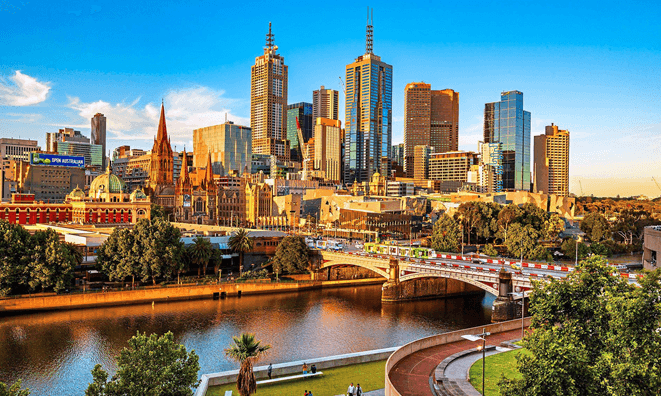
Program Status Update
Open to offshore applicants, the program provides skilled migrants with a pathway to permanent residency in Victoria. The skills that successful applicants bring to Victoria benefits employers and the broader Victorian economy.
The program provides two visa pathways:
As with previous years, applicants will first need to submit a Registration of Interest (ROI) and then be selected on competitive merit to apply for visa nomination.
NOTE: If you submitted a subclass 491 ROI for the 2022-23 program, you must submit a new ROI for the 2023-24 program.
If you submitted a subclass 190 ROI for the 2022-23 program, you do not need to submit a new ROI for the 2023-24 program. You should ensure that all information in your ROI is still correct.
Both onshore and offshore applicants are eligible to submit a Registration of Interest (ROI) for both the subclass 190 and subclass 491 visas.
Your ROI will remain in the system for selection until it is withdrawn, selected or the program year ends.
Before submitting an ROI for Victoria, applicants should check that they meet all eligibility requirements.
For a further explanation, see the Frequently Asked Questions page on the Victoria Government website.
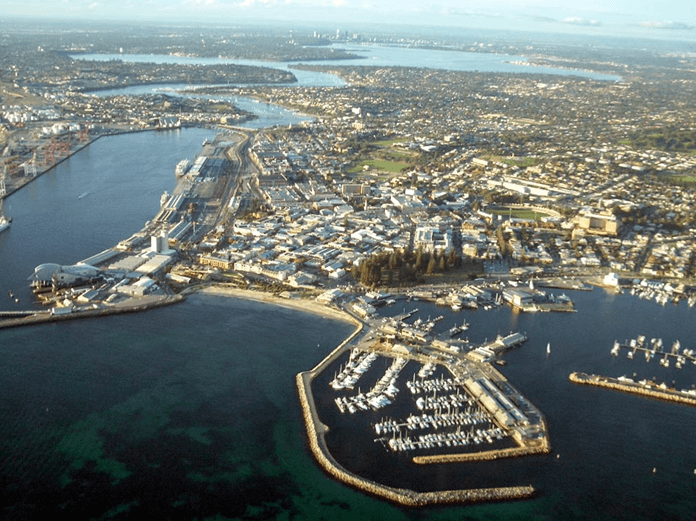
Program Status Update
People residing offshore are eligible to be considered for Western Australia (WA) State nomination. Invitations to apply for WA State nomination will be via the ranking system.
The Western Australian Skilled Migration Occupation List identifies the occupations in current demand in Western Australia. This List is important if you want to apply for Western Australia nomination for either a:
Please note that to be eligible for an invitation in the WA State Nominated Migration Program, you must meet both:
Before starting your application, you will need to check whether your occupation is available on either the WA Skilled migration occupation list (WASMOL) Schedule 1 or 2, or the Graduate occupation list. You can search for your occupation here. (The occupation list search bar is located under the heading ‘Eligible Occupations’.)
Features of the WA 2023-24 State Nominated Migration Program:
Before submitting an EOI for Western Australia, applicants should check that they meet all eligibility requirements.
For a further explanation, see the Frequently Asked Questions page on the Western Australia Government website.
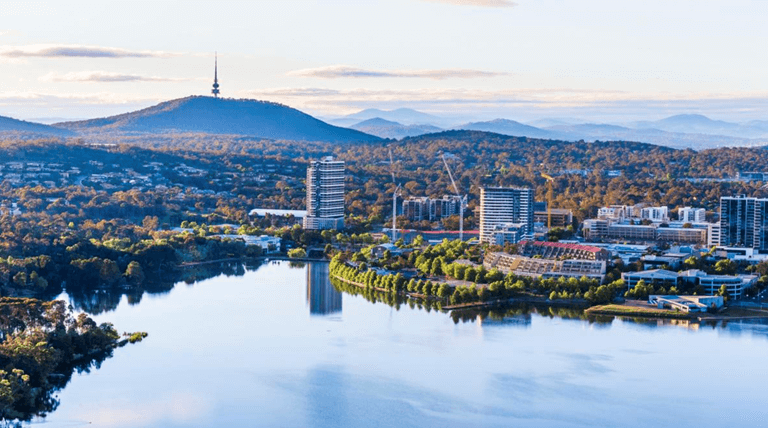
Program Status Update
The ACT Critical Skills List identifies the occupations in current demand in the ACT. This List is important if you want to apply for ACT nomination for either a:
The ACT Government will update this list every four months to make sure that the ACT Skilled Migration Program adapts and responds to the evolving critical skills needs of the ACT economy.
The Canberra Matrix is weighted to ensure that applicants who will make a positive economic contribution to the Territory and/or have demonstrated a genuine commitment to the ACT are more likely to be ranked and invited to apply for ACT nomination.
*ACT nomination does not guarantee a migration outcome. You must still meet the Department of Home Affairs criteria.
Every month, a certain number of nomination invitations are available (prorated on the annual allocation) to those working in the highest ranked Matrix in each occupation.
You can view the ACT’s most in-demand skills for skilled migration by consulting the ACT Critical Skills List.
Before submitting an EOI for The Australian Capital Territory, applicants should check that they meet all eligibility requirements.
Once you’ve submitted a valid Department of Home Affairs Skill Select EOI, follow the ACT Government Process to apply for ACT nomination.
For a further explanation, see the Resources page on the ACT Government website.
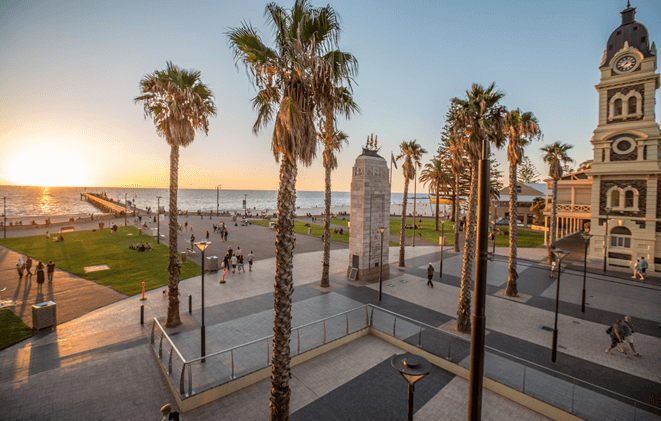
Program Status Update
To manage South Australia’s COVID recovery response, applicants currently residing offshore are able to apply.
Depending on your occupation and situation, there are two state nomination options available for skilled migrants through South Australia.
For South Australian state nomination, prospective applicants must meet the Department of Home Affairs requirements, state-specific occupation requirements and have skills in an occupation that is available on the South Australian Skilled Occupation List. Offshore applicants meeting the minimum published requirements can now lodge an Expression of Interest (EOI).
There is an enormous range of occupations on South Australia’s Skilled Migration Occupation List in a range of industries – search for your occupation here.
South Australia will select offshore applicants to apply for state nomination from those who have submitted an Expression of Interest (EOI) through SkillSelect. Offshore applicants will not need to lodge a Registration of Interest (ROI) for this year’s program. South Australia will be nominating offshore applicants from over 250 occupations on South Australia’s Skilled Migration Occupation List. To be eligible, ensure all the information in your SkillSelect EOI is up to date and you have selected South Australia as your first preferred state or territory to move to in Australia.
South Australia will be assessing candidates on merit by the following factors, within their nominated occupation:
Before submitting an EOI for South Australia, applicants should check that they meet all eligibility requirements.
For a further explanation, see the Frequently Asked Questions page on the South Australia Government website.
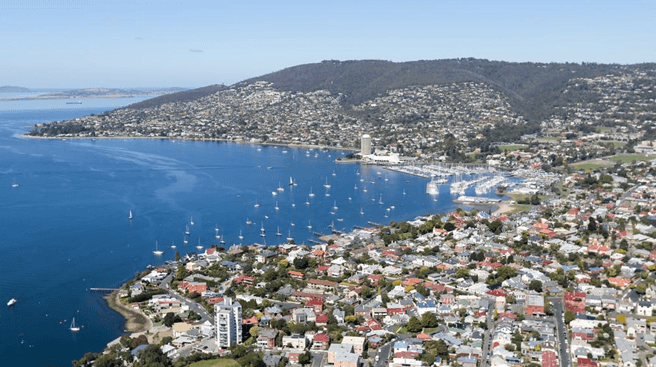
Program Status Update
Working in Tasmania
The two state nomination options available for skilled migrants through Tasmania are:
The Tasmanian State Nomination Skilled Migration Program supports Tasmanian businesses and increases the state’s working age population. It does this by attracting and retaining migrants with skills genuinely in need by employers, or with the capacity to settle in Tasmania through skilled employment in the long-term, and business activities that will increase employment opportunities.
Tasmania’s skilled migration program is for people wanting to move to the state who have skills that Tasmania need. Skilled migrants are attracted to Tasmania because of the state’s enviable lifestyle, career opportunities, affordable housing, reputable schools and a globally recognized university.
The Migration Tasmania Application Gateway is now available for registrations of interest (ROI) and applications for skilled visa nomination from Tasmania.
Anyone seeking Tasmanian nomination for a Subclass 190 Skilled Nominated Visa or Subclass 491 Skilled Work Regional Visa must first register in the Migration Tasmania Application Gateway .
Before submitting an ROI for Tasmania, applicants should check that they meet all eligibility requirements for either;
ROIs submitted before 1 July 2023 will remain valid for the 2023-24 program year.
ROIs and applications submitted from 5 July 2023 fall under the new eligibility requirements.
In cases where new requirements are likely to be beneficial, candidates may wish to withdraw their current ROI and submit a new one. (There is no charge to submit a Registration of Interest)
For a further explanation, see the Frequently Asked Questions page on the Tasmania Government website.
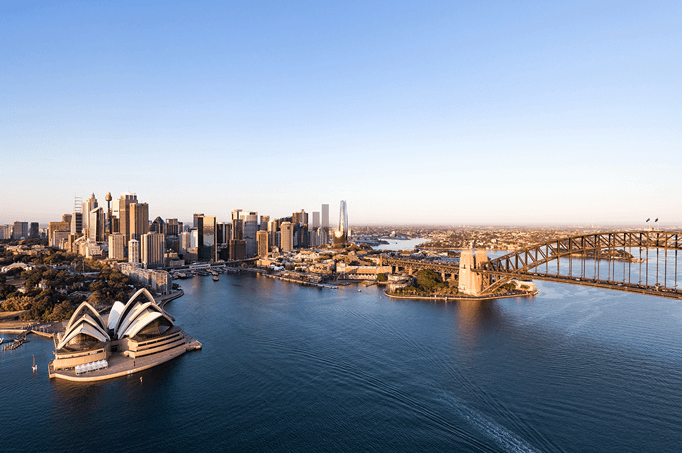
Program Status Update
The New South Wales government has invited applications from offshore migrants under the following nomination streams:
The NSW State Government announced that offshore applicants skilled in certain ANZSCO unit groups are still eligible for NSW nomination.
*Please note: Invitation rounds occur frequently throughout the financial year with no set date.
NSW invites and nominates SkillSelect EOIs at the ANZSCO unit group level. To be eligible for NSW nomination (for either Subclass 190 or Subclass 491) you must be skilled in an occupation that both:
It is important to note that not all occupations within ANZSCO unit groups are eligible for the respective visa. It is the responsibility of the prospective migrant to ensure their occupation is eligible for the visa before obtaining a skills assessment.
Your EOI must be exclusively for the ‘Skilled Nominated visa (Subclass 190)’ or ‘Skilled Work Regional visa (subclass491)’ and seeking nomination from NSW only.
This means that if your Skillselect EOI has multiple visas and/or multiple states selected (this includes selecting ‘ANY’), your Skillselect EOI will not be considered for NSW nomination.
What are the NSW target sectors?
The NSW target sectors are specific industry sectors that have been identified by data research as having critical skills shortages in NSW. They include:
Although all validly submitted SkillSelect EOIs will be considered during an invitation round, priority is given to EOIs in these target sectors.
Is my occupation within a NSW target sector?
The NSW government cannot confirm whether individual occupations fall within NSW’s target sectors. So long as you maintain a validly submitted EOI in SkillSelect, your EOI will be considered in all future NSW invitation rounds.
Will NSW invite EOI’s in occupations outside of the NSW target sectors?
High-ranking EOIs in occupations outside of the NSW target sectors may be considered during invitation rounds; however, it’s crucial to understand that the odds of receiving an invitation are exceptionally low due to high demand and limited spots.
Before submitting an EOI for New South Wales, applicants should check that they meet all eligibility requirements for either;
For a further explanation of how the skills list works, see the Common questions about skilled visas page on the NSW Government website.
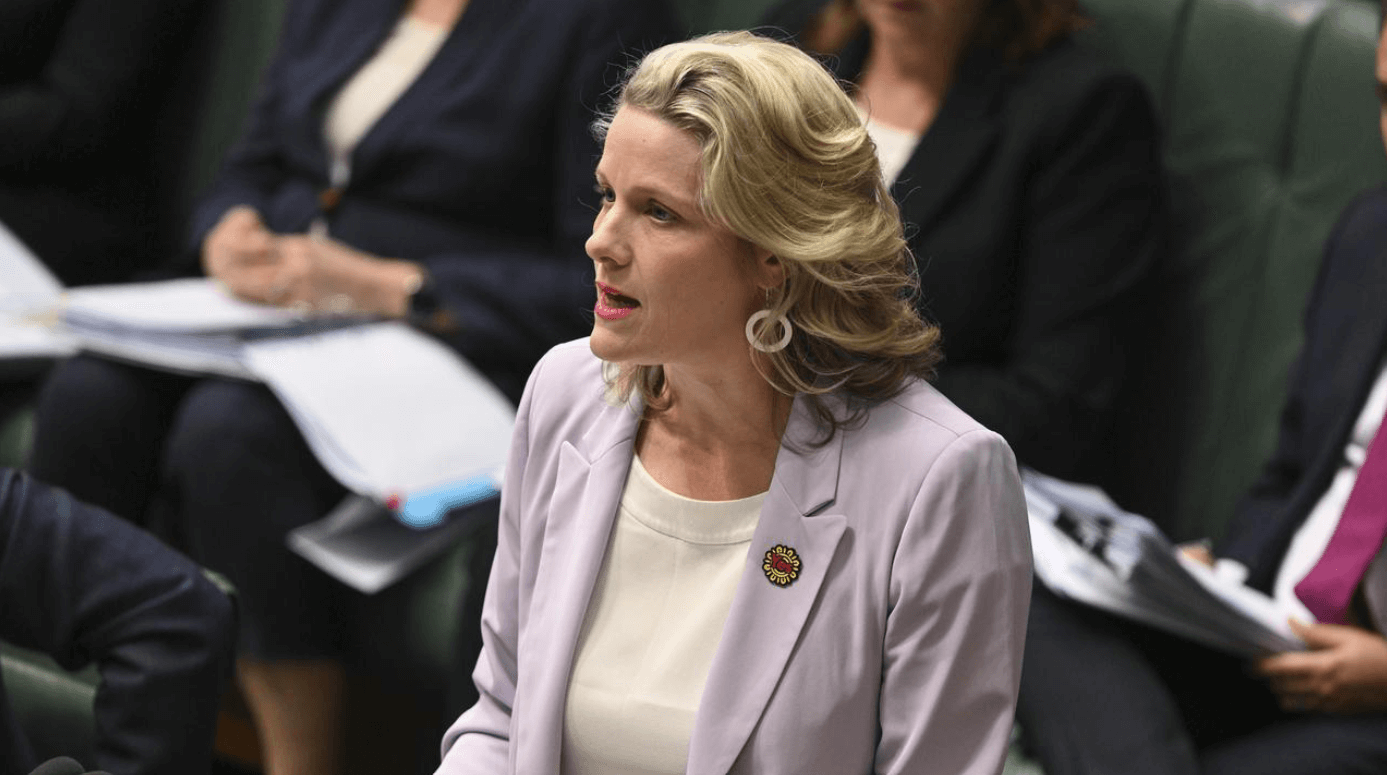
Employers have warned of a skilled foreign worker exodus from the regions to the cities under sweeping new visa rights being considered by the Albanese government.
A leaked government discussion paper reveals advanced details of Home Affairs Minister Clare O’Neil’s migration system shake-up that will provide pathways to permanent residency for up to 2.1 million temporary visa-holders.
Industry briefings conducted in the months following the April release of the migration review confirmed the government was moving towards a shake-up of mobility rules that attach sponsored workers with employers (ie. Employer Sponsored Visas).
A new temporary skill mobility visa, which has sparked concern among industry groups, is being considered by the government to move “away from a single employer sponsorship to a model that allows for mobility between approved employers”.
The visa would include settings that make it simpler to leave your employer, provide longer visa validity periods and simplify visa application requirements.
“If the employment relationship with the nominating employer ceases, migrants would now have six-months to find another sponsor and they would have work rights during this period,” the discussion paper says.
“Migrant workers would only need to submit a new visa application if they require a new skills assessment. They can move to any approved sponsor, in any industry, as long as they work in an occupation on the occupation list or meet the high income threshold.”
Ahead of Ms O’Neil releasing the government’s final migration strategy in coming weeks, industry leaders have been told that mobility changes would consider shifting sponsor employers to monthly fees.
Seeking to “break the single employer sponsorship model”, that unions say leads to worker exploitation, stakeholders were told the government is focused on reforms removing “disincentives that stop migrant workers from seeking improved wages and conditions with another employer, regardless of industry”.
Under current arrangements, employer sponsors pay a range of fees upfront including sponsorship, nomination fees and the Skilling Australians Fund levy.
“It is proposed that, other than an upfront fee to become an approved sponsor, sponsors pay the remaining fees on a monthly basis while the visa holder remains in their employment.”
“This obligation would transfer to any new employer. The government is considering a modest increase in the upfront fee to become a sponsor in order to dissuade new employer ‘poaching’.”
Combined with the government’s Temporary Skilled Migration Threshold hike on July 1, lifting the minimum rate paid by employers to temporary skilled shortage visa holders from $53,900 to $70,000, business leaders and the Coalition say major changes to mobility rules could create a jobs emergency in regional Australia. Victorian Automotive Chamber of Commerce chief executive Geoff Gwilym said employers would not take the risk if a person “can up sticks after two-months and go to an employer in another area”.
“What the government hasn’t outlined is how the first employer would recover any of their costs from the second employer. Where does that first employer recoup their $20,000 from. What we don’t want is punch-ups in carparks between business owners about who owes what for the labour,” Mr Gwilym said.
“And, to be fair to the person migrating or on a temporary work visa, we don’t want them involved in a dispute between two employers based on who fronted up the money to get them out here in the first place. I think that’s a terrible presentation of how Australia deals with its labour force.”
Mr Gwilym said proposed mobility changes would “significantly slow down the flow of automotive technicians into regional areas”, which he claimed meant Australians would “pay more for your service”.
“If you add into that greater flexibility for people on employer-sponsored visas to move from regional to metropolitan areas – that’s what they’re going to do,” he said. Under pressure from the Coalition over the impact of migration on housing and infrastructure, Ms O’Neil said “the overall effect of these changes will not be to increase migration in Australia” and would “reduce the size of the system a bit”.
“When we arrived in office we found a migration system which was fundamentally broken. It was slow, expensive, impossible to use, not serving Australians and not serving our economy,” she said. “This is actually not about how many people come to Australia. It’s not about how many people come through; it’s about who.”
Opposition immigration spokesman Dan Tehan said if the reforms were adopted, “communities across regional Australia will be left without critical workers like nurses, aged-care staff, teachers, mechanics and chefs”. “Labor’s changes will see Australians in regional communities lose access to key services while people living in capital cities will face higher rents, worse congestion, and more demand on government services, like hospitals and schools,” Mr Tehan said.
“When the local mechanic closes because they have no workers to fix cars, and the corner pub closes because they have no cooks to keep the kitchen open, you can blame Labor.
“Why would a business spend money, time, and effort to recruit workers to fill skills shortages if that worker can leave on day one and move to the city.”
The discussion paper says a new “essential industries pathway”, enabling employers in critical industries experiencing persistent shortages to access migrant labour through a regulated tripartite process, would likely “occur after the migration strategy is released”.
Aged-care providers are the only sector currently eligible to make deals with unions to bring in foreign workers. Industry sources said the purpose of the migration program was to “fill dedicated skills gaps in the Australian economy – not to see that labour bleed out into other markets”. They are also concerned that some migrant workers could seek “to extend their stay and use the proposed avenues as a means of raising disputes”.
Restaurant & Catering Australia chief executive Suresh Manickam said there was “massive uncertainty” around mobility changes and fee payments which could be “lost to the ether”.
“Is there some sort of recourse for the employer? How does that work? We would have serious concerns about that because it provides no certainty,” he said.
“The sponsored worker can just shoot through at the drop of a hat. My fear is under this suggested policy setting it provides no certainty to either the employer or the industry more generally.”
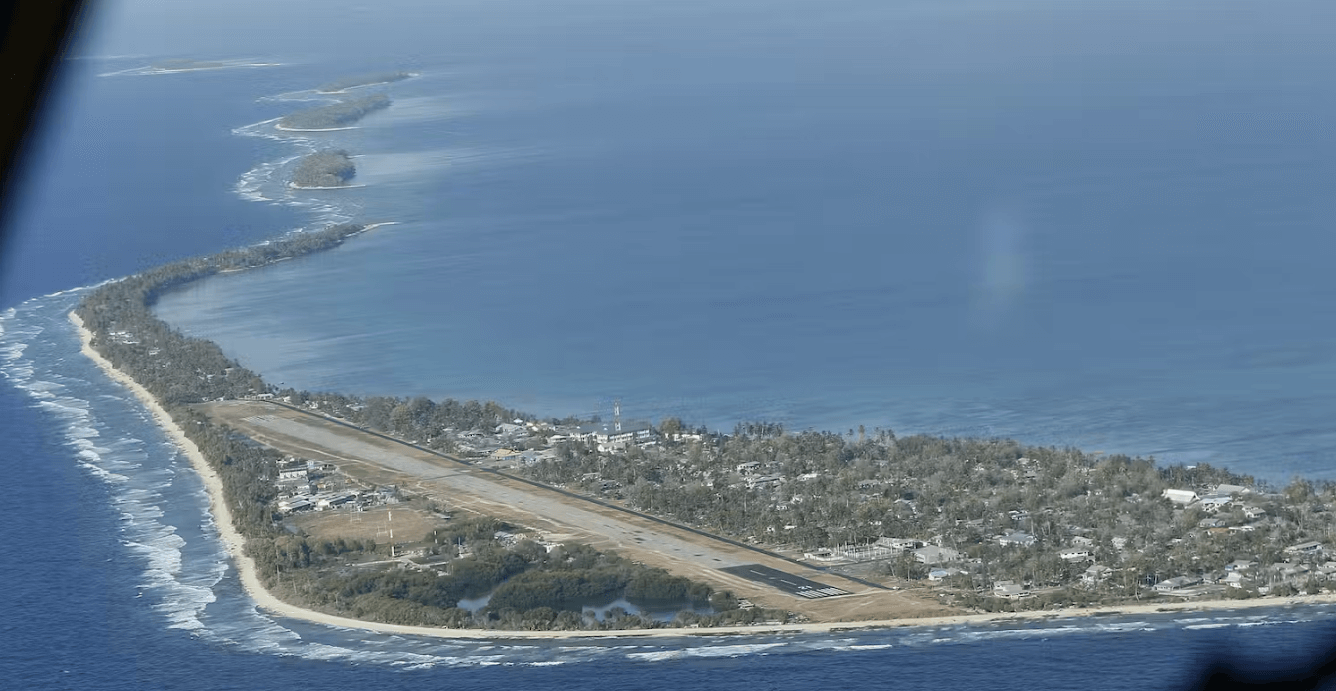
Prime minister Anthony Albanese announces immigration plan with special visa category for people affected by rising sea levels in the vulnerable Pacific island nation.
Australia will offer residency to people affected by climate change in the low-lying Pacific nation of Tuvalu, as part of a sweeping new treaty that also locks the two countries into close security ties.
At a time when many Pacific leaders are pressing Australia to take stronger action against its fossil fuel sector, the treaty explicitly recognises the vulnerability of Tuvalu to rising sea levels.
Tuvalu is a country of nine low-lying islands in the central Pacific, about halfway between Australia and Hawaii, with a population of about 11,200.
Australia will offer up to 280 people access to permanent residency each year, but it has also promised to help the citizens of Tuvalu “stay in their homes with safety and dignity”.
The Australian prime minister, Anthony Albanese, said the deal would also cement his country’s status as Tuvalu’s “security partner of choice” by offering it a form of security guarantee.
The new treaty, announced on Friday, states that Australia will act on requests from its partner to respond to major natural disasters, pandemics or “military aggression against Tuvalu”.
In return for this security guarantee, Tuvalu will be required to “mutually agree with Australia” if it wants to strike a deal with any other country on security and defence-related matters.
These topics are defined broadly to include “defence, policing, border protection, cybersecurity and critical infrastructure, including ports, telecommunications and energy infrastructure” – all of which are of interest to China.
Australia’s military could be granted access and have a presence within the country if such activities are deemed necessary to provide assistance that had been requested by the Pacific country.
The deal will be seen as a strategic win for the Australian government at a time when China has been vigorously pursuing closer ties with Pacific island countries.
Beijing’s signing of a security pact with Solomon Islands last year rocked the Australian defence establishment and prompted a pledge from Albanese’s Labor government to more vigorously pursue engagement with its Pacific neighbours.
Albanese announced the plans after three days of talks with fellow Pacific leaders at a key regional summit in Cook Islands, where the climate crisis was one of the biggest issues on the agenda.
Australia and Tuvalu’s relationship has been elevated to a new partnership to be known as the Falepili Union – a Tuvaluan word referring to good neighbourliness, care and mutual respect. Albanese said the new union recognised the “special and unique challenges” faced by Tuvalu and its exposure to climate change, including its geographical remoteness and scarce natural resources.
The elevated partnership was requested by Tuvalu, the prime minister said, “to safeguard the future of Tuvalu’s people, identity and culture”.
“That is why we are assisting on adaptation, but we are also providing the security that these guarantees represent for the people of Tuvalu, who want to preserve their culture, want to preserve their very nation going forward as well,” he said.
Government sources said it was not anticipated that all Tuvalu residents would move to Australia, with no expectation of “wholesale migration” – but instead “migration with dignity” for those who wanted to travel.
Albanese met two days ago with the Tuvalu prime minister, Kausea Natano, who described himself as “the leader of a country that is going to be under the water” if the world does not tackle the climate crisis.
The multifaceted agreement includes a “special mobility pathway” and visa category for 280 Tuvaluan citizens each year to gain permanent residency in Australia, with rights to live, study and work, as well as access services. The new pathway will sit under the existing Pacific engagement visa.
Australian government sources said Tuvalu would choose which citizens would be offered access to the new visa pathway.
Natano, appearing alongside Albanese in Cook Islands on Friday, said the system would be designed to avoid “brain drain” in the Pacific nation.
“The dedication of Australia to supporting the people of Tuvalu goes beyond words and it has touched our hearts profoundly,” Natano said.
Tuvalu is one of very few nations in the Pacific to have formal diplomatic relations with Taiwan, although Solomon Islands switched allegiance to China in recent years.
Natano told the press conference that Tuvalu would continue to maintain diplomatic relations with Taiwan, but said China had approached his country to seek ties.
He said he and Albanese had briefed the Pacific Islands Forum – the 18-member regional grouping – earlier in the day during the leaders’ retreat on the island of Aitutaki.
Australia’s pledge also includes further cooperation on the Tuvalu Coastal Adaptation Project, which would reclaim land in the capital, Funafuti, in the hopes of expanding the land mass by 6% to create more space for housing and other essential services and “enabling people to remain living in Tuvalu in the face of sea level rise”.
The climate crisis is repeatedly cited by Pacific countries as their top security threat and many within the region are concerned about Australia’s approval of new coal and gas projects.
The leader of the Australian Greens, Adam Bandt, responded to the announcement by saying it “would be even better if Labor didn’t cause the damage in the first place and stopped approving new coal and gas mines”.
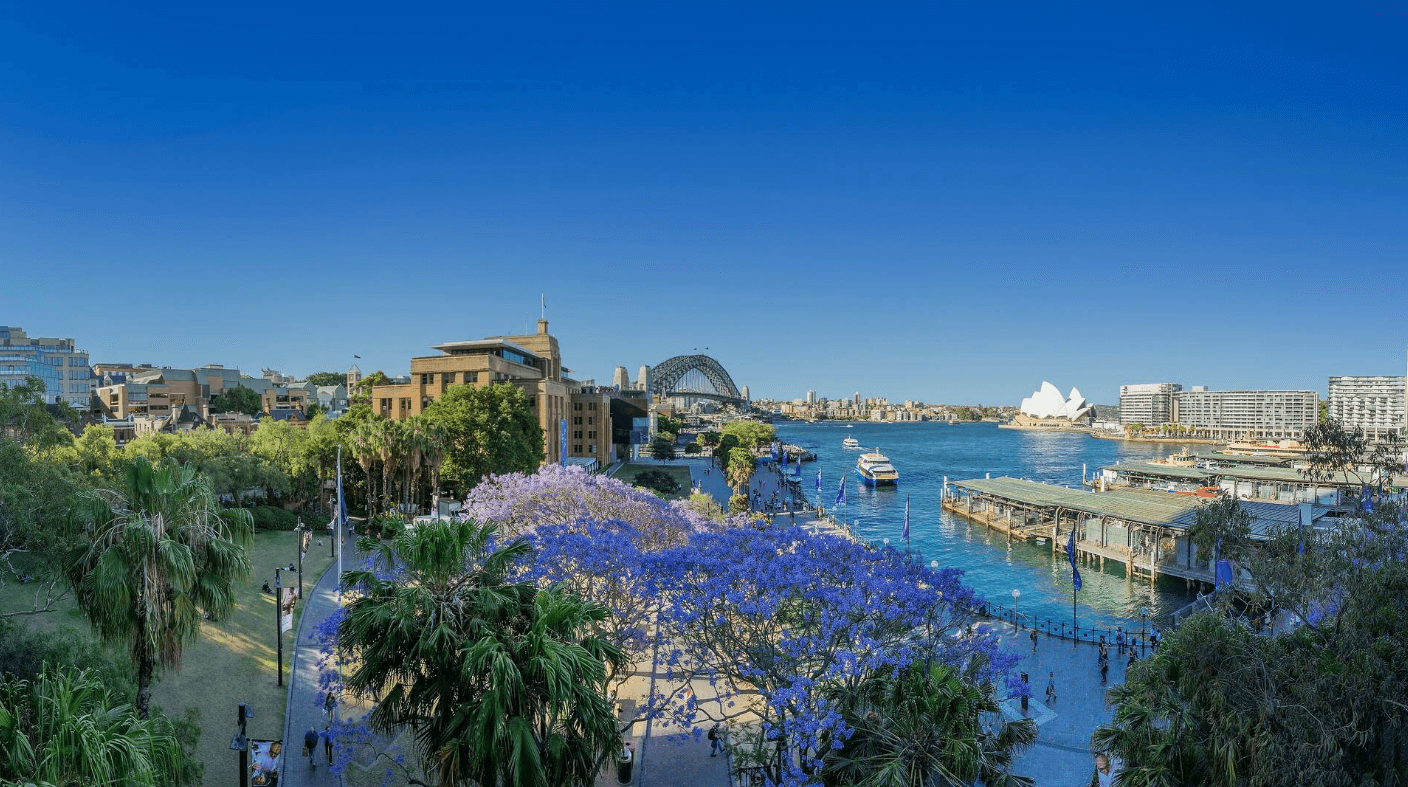
In news that will inevitably be contested by many locals, Sydney has just been declared both the best place in the world to live – and the 5th best city, overall, in the world.
According to a global survey conducted by brand consultancy Brand Finance, Sydney scored 77.9/100 in a survey that took on answers from 15,000 regular people from all over the world. Note that this survey was all about ‘perception’, which essentially means that the data was taken from asking people from around the world (including from here) what they think Sydney and other cities would be like to live in. Questions were asked around a number of liveability and other factors.
Sydney got first place for the most ‘desirable’ place in the world to live, thanks to its vast natural beauty, stunning beaches and harbour. Fair.
It was ranked 2nd best city for retirement, and 2nd for the best city for local and remote work offerings. In less controversial results, it scored 3rd in the world for best weather.
When all these things were added up, Sydney ranked 5th on the Brand Finance City Index list for ‘best city brand’, which means that clearly Sydney’s ‘vibe’ has made it across the planet in a way that is mostly highly regarded.
London came in at number one city overall in this survey, with a total score of 84.6/100, followed by New York City, Paris, Los Angeles, and then Sydney.
With the results of this particular survey all driven by perceptions, of course these results will spark debate in a lot of ways.
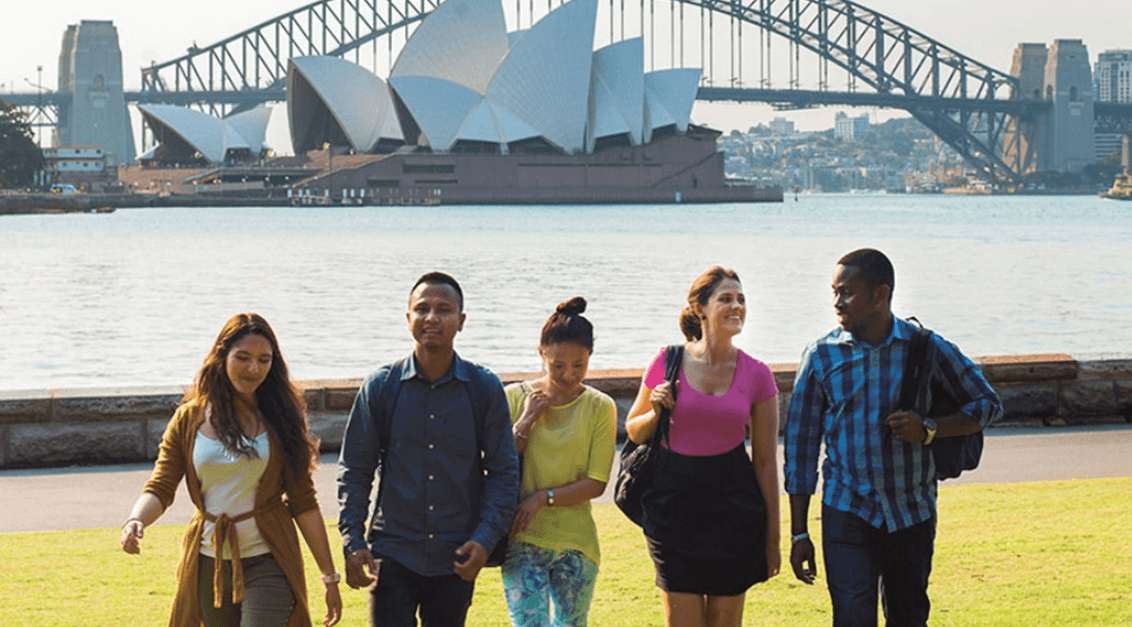
Overseas students are one of the main contributors to the surge in population across Australia, according to Macro Business Chief Economist Leith van Onselen.
“The number of overseas students and also people on graduate visas in Australia has increased by … just over 300,000 last financial year,” he said.
“So that’s effectively what has driven a large part of this late migration surge.”
“There’s now about 850,000 people in Australia currently either on a graduate visa or on a student visa, and that basically means one in 30 people in Australia right now is on one of those visas.”

You have debt, your parents invested their life savings in you and you’ve got dreams to achieve. Whether you’re at uni or at work, you’re asking “How to get rich fast?”
There’s no one-size-fits-all quick answer to this — but there are certain steps that can help you turn that question “How to get rich fast” into this statement: “I got rich fast.”
But first, it’s important to understand why you want to do this — and whether you’re doing it for the right reasons.
Paying off debt is a good reason to accelerate your journey to becoming rich.
Many students and young workers are often in debt, and sometimes with unforgiving interest rates.
You may be one of them. Even if you don’t owe anything to a bank, you have an informal loan from your parents.
The cost of an undergraduate degree can go up to $57,590 — and it gets more expensive if you’re pursuing a specialised subject like law, medicine, or engineering.
As a student up Grad Abroad predicts you to spend up to $28,000 annually on:
That’s on top of the country’s inflation rate.
If you’re overwhelmed by what you just read, that’s normal. You might even be well aware of this as someone who’s planning to, already is, or have studied in one of the most popular study abroad destinations.
Regardless of which point of your journey you’re in, knowing which degrees are better at answering the question “how to get rich fast?” is important.
And it’s a much safer, reputable and fulfilling way to financial independence than dubious get-rich-quick schemes, such as:
Now that you know what to avoid, you can focus on what actually works in the journey of how to get rich fast: working hard and working smart.
Whether you’re planning to, already are, or have graduated, it’s important to know what are the best degrees to help you answer the question “how to get rich fast?” so you can make the right decisions.
Before we move on to the best degrees for you to succeed quickly, however, let’s debunk the elephant in the room.
What is the fastest way to get rich as an international student?
Achieving your first million a few years after graduating is possible.
The first step to learning how to get rich fast, however, is understanding that it’s going to take a lot of effort.
Many successful millionaires were at the right place and time in their lives. It involved:
Learning to look at the journeys of successful people can be a crucial factor in mastering how to get rich fast. Going to the same university and choosing the same degree they did can put you at the right place and right time too.
That said, pursuing a degree solely for the purpose of getting rich fast may not be the best approach, as financial success is influenced by many factors beyond just one’s degree.
Life, in the form of love, family and personal setbacks, can get in the way and are hard to avoid.
There are, however, specific degrees that lead to a higher earning potential and despite the usual challenges that are in store, fast-track your journey on how to get rich fast.
For this article, as you may not be residing in Australia after you finish your degree, we’ll use data from the US Bureau of Labour Statistics (BLS) and determine the best degrees you should pursue for quick financial success.
How to get rich fast: 10 best degrees for quick success
1. Business Administration and Management
This is one of the most versatile and flexible fields to study, giving you access to many roles in many industries. If one role isn’t working, you can move to another — and this is possible thanks to 715,100 new jobs that are to be created from 2021 to 2031.
Being able to move from one high-paying job to another increases your chances of getting higher salaries.
The median annual wage was US$76,570 in May 2021 — higher than the median annual wage for all occupations of US$45,760.
2. Law
Lawyers, especially those specialising in corporate law, intellectual property, or litigation, charge by the hour — which means the sky’s the limit for those willing to put in the hard work to bill more.
In the US, overall employment in law is expected to grow 10% from 2021 to 2031, which will create 833,100 new jobs over the decade.
The median annual wage was US$127,990 in May 2021.
With every profession, you stand to earn higher the more skilled and in-demand you are.
“There are plenty of very well-off lawyers, but that’s really just the top layer of the profession. Most lawyers earn more of a solid middle-class income,” says Amanda Devereux, a partner at Cadwalader, Wickersham & Taft LLP.
3. Air traffic control
To become an air traffic controller, you need an associate or bachelor’s degree from an Air Traffic Collegiate Training Initiative (AT-CTI) programme in the US, or similar authority in your home country.
This will prepare you to become responsible for the safe and efficient movement of aircraft in the air.
It’s a job that’s harder than it looks as you need excellent critical thinking and problem-solving skills, as well as the ability to stay calm under pressure.
In 2021, an air traffic controller makes an annual median salary of US$129,750. There are about 2,400 openings for air traffic controllers projected each year from 2021 to 2031.
4. Computer science
The demand for skilled computer scientists is higher than ever — especially in an age where tech companies compete to launch the best social media app.
Overall employment in computer science is expected to grow 15% from 2021 to 2031.
This increase should bring about 682,800 new jobs over the decade, much higher than other jobs on our list.
The median annual wage for this field was US$97,430 in May 2021.
5. Finance
For those of you who have a knack for balancing budgets and crunching numbers, a degree in finance holds a fair bit of promise.
As financial analysts guide, you can guide businesses and individuals to make smart financial decisions.
The best part? BLS recorded the median pay for this role to be US$95,570 in 2021.
Overall employment in business and finance is expected to grow 7% from 2021 to 2031.
This increase should bring about 715,100 new jobs over the decade, much higher than other jobs on our list.
6. Dentistry
Pursuing a specialised medical career can be tough, but the reward is worth the effort.
To become a dentist, for example, you’ll need to complete a five-year degree in dentistry approved by the General Dental Council, followed by one to two years of postgraduate dental training.
In some cases, you are required to complete a Dental Admission Test to be admitted into dental schools in the US.
That’s not including the dental equipment you’ll handle at uni, the cost of clinical rotations, or your cost of living as an international student.
The median annual wage for this role, however, is US$163,220 in 2021.
Overall employment in healthcare is expected to grow by 13% from 2021 to 2031, which should bring about two million new jobs over the decade.
7. Supply chain management
A degree in supply chain management is ideal for someone who enjoys coordinating large-scale projects and understands the need for rigorous quality control parameters.
It’s even better if you love the industry in which these projects take place.
You could also contribute to making supply chains more sustainable and play your part in combating climate change.
Overall employment in logistics is expected to grow by 28% from 2021 to 2021.
The median annual wage for logisticians (a term for someone working in supply chain management) was US$77,030 in May 2021.
8. Management information systems
Big data has been the biggest talking point within the tech space in recent years.
Taking on jobs such as an information technology project manager, business systems analyst, or even a specialised software developer are opportunities rife with potential.
BLS predicts that employment for computer and information systems managers will grow by 16% from 2021 to 2031.
The median annual wage for computer and information systems managers was US$159,010 in May 2021.
9. Engineering
An aspect of engineering you can consider is civil engineering.
Engineers in this field are essential in designing and overseeing the construction of infrastructure projects, such as roads, bridges, and buildings.
This field offers ample opportunities for high-paying jobs (around US$88,050 per year in 2021) — especially in sectors like construction, transportation, and urban planning.
Employment of civil engineers is expected to grow by 7% from 2021 to 2031.
Civil engineers who excel in their careers can advance to managerial positions, leading to increased earning potential.
Some engineering graduates end up changing to other industries (regardless of the type of engineering), which is possible because of the many transferable skills you gain.
In the long run, most engineering degrees will stand the test of time because of this.
10. Cybersecurity
As jobs in computer science and management information systems continue to flourish, it’s not surprising to see strong demand for cybersecurity professionals.
Take working as an information security analyst, for example.
As a specialist, you’ll stay updated with the latest security trends, vulnerabilities, and countermeasures.
You’ll also perform risk assessments and identify vulnerabilities within an organisation’s infrastructure, networks, or applications.
Employment of information security analysts is expected to grow by 35% from 2021 to 2031, which is much faster than the average for all occupations listed on BLS.
The median annual wage for information security analysts was US$102,600 in May 2021.


The world renowned Adelaide Street Circuit again played host for the Adelaide 500 Supercars event which was an action packed weekend including driver autograph sessions, exotic vehicle displays, sideshows and family entertainment with some of the world’s biggest acts including Robbie Williams taking to the stage! Adelaide, South Australia. November 2023
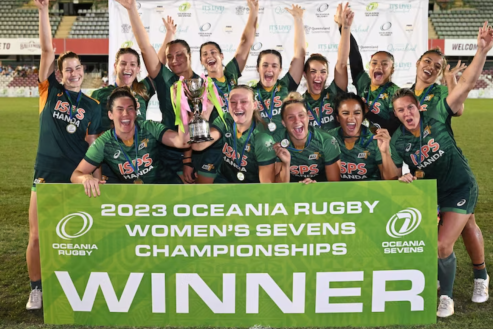
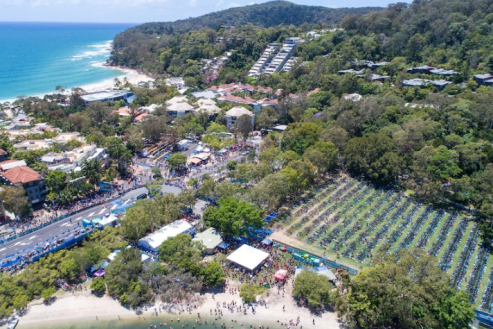




As the Southern Hemisphere’s largest public parade, The National Pharmacies Christmas Pageant was a magical community event, full of fantasy, floats, colourful characters, bands and dancers as the pageant marked the official welcoming of Father Christmas to Australia! Adelaide, South Australia. November 2023
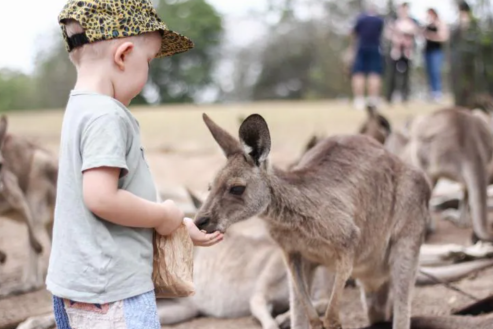

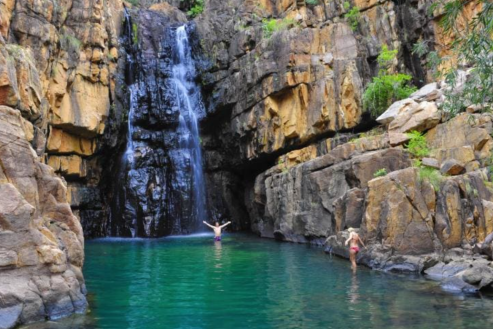

This Bulletin and its contents is for general information purposes only and should not be used as a substitute for consultation with professional advisors.
As legislation and travel requirements are constantly changing, we strongly recommend obtaining advice on your individual situation from a Registered Migration Agent. Please click here to book a consultation with one of our Registered Australian Migration Agents, located in Australia.






You can manage your membership and billing method by clicking here
Terms of Service
Privacy Policy
Copyright © 2025 Office of Immigration Australia, a private company registered in Australia. All Rights Reserved.